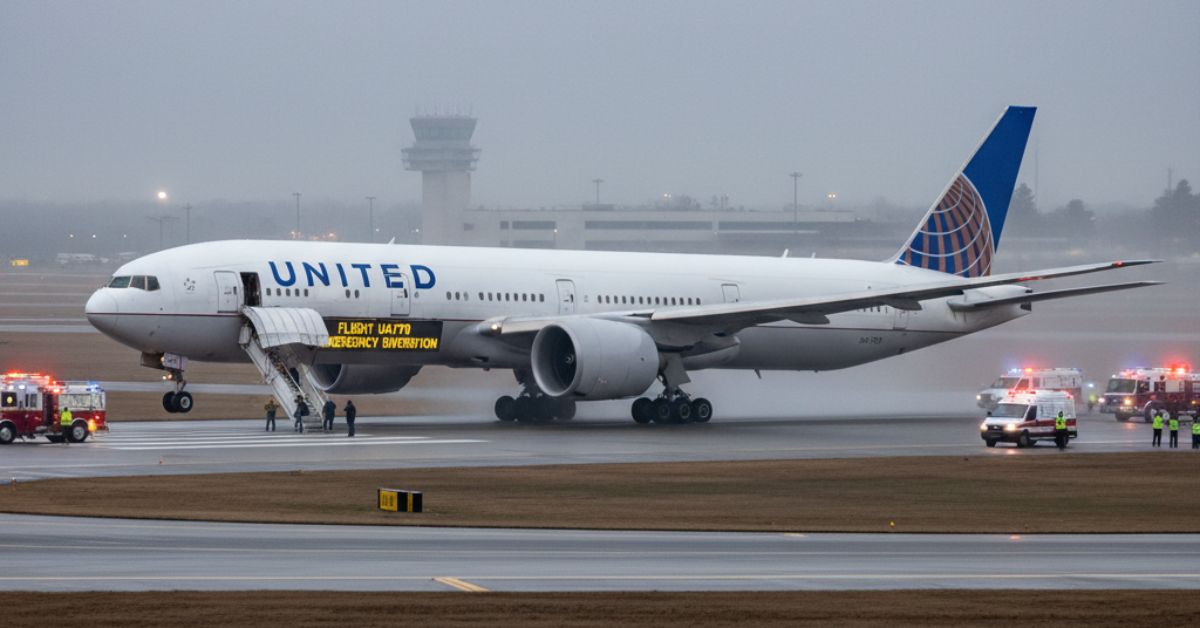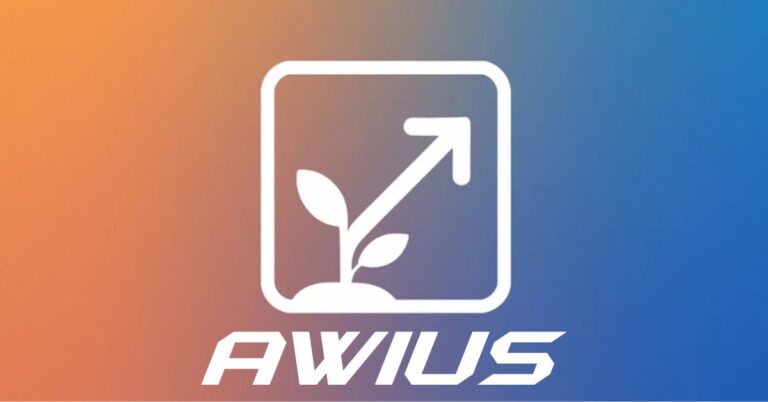On May 27, 2025, the phrase United Airlines Flight UA770 emergency diversion moved from flight status screens into headlines. What began as a routine transatlantic service became an aviation story that tested crew training, airline procedures, and passenger communications. This article walks through the timeline, technical and human factors, the passenger experience, and the larger safety lessons from the united airlines flight ua770 emergency diversion. Throughout the article you will find clear, practical analysis and a concise timeline table to help readers understand what happened and why it matters.
Quick summary
United Airlines Flight UA770, operating from Barcelona to Chicago, declared an in-flight emergency and diverted to London Heathrow on May 27, 2025. The crew executed a safe diversion and landing. No injuries were reported and emergency services met the aircraft on arrival. Multiple outlets reported that the diversion was prompted by a technical anomaly that the flight crew treated as a potential safety risk, requiring a precautionary diversion.
Why diversions happen and why they are not failures
When you hear the phrase united airlines flight ua770 emergency diversion you might picture chaos. In aviation terms, a diversion is usually the right outcome. Diversions are decisions made by the pilot in command based on available information about aircraft systems, weather, medical needs, security, or other threats. Declaring an emergency and diverting is a judgment call that prioritizes safety over schedule or convenience.
In this case, reporting indicates that the crew observed an anomaly and chose a nearby airport with appropriate facilities. That decision to divert is exactly how the system is supposed to work. It removes risk, gets the aircraft to ground where technicians can diagnose the problem, and allows passengers to continue their journeys after the airline puts recovery plans in place.
Timeline of the United Airlines Flight UA770 emergency diversion
Below is a concise timeline of the key events around united airlines flight ua770 emergency diversion. The times listed are taken from public reporting and may appear in local times reported by the media.
| Timeframe | Event |
| Preflight and departure | Flight UA770 departs Barcelona bound for Chicago. |
| Cruise phase | Crew notices a technical indicator that prompts further checks. |
| Decision to declare emergency | Captain declares an emergency and requests diversion to the nearest suitable airport. |
| Diversion and landing | Aircraft diverts and lands safely at London Heathrow. |
| On-ground response | Emergency services meet the aircraft, inspections are carried out, passengers disembark. |
| Recovery | Passengers rebooked and aircraft taken for detailed technical inspection. |
This compact table summarizes the essential steps involved in the united airlines flight ua770 emergency diversion and why each stage matters for passenger safety.
What media and tracking data tell us
Open-source tracking and contemporary reports show the path and disposition of UA770 during the incident. Flight tracking resources and multiple news outlets recorded the diversion and safe landing. Those sources confirm the basic facts: the plane did not complete its scheduled nonstop trip to Chicago and instead landed at a major alternate airport where technicians and emergency services were available. The flight tracking snapshot is consistent with the accounts published by aviation news and mainstream travel outlets.
The captain’s decision and cockpit procedures
The captain is ultimately responsible for the aircraft. In every aircraft type the crew follows standard operating procedures to verify indications, consult checklists, communicate with air traffic control, and select a diversion airport. The crew will consider safety margins, nearest field suitability, runway length, weather, and the presence of maintenance facilities. The united airlines flight ua770 emergency diversion shows the operative principle of conservative decision making: when in doubt, land.
Captains also declare emergencies to give priority handling from air traffic control and to make sure the destination has necessary ground support waiting. Declaring an emergency is not an admission that the aircraft is unairworthy. It is a tool to secure resources and time. Reports indicate the declaration for UA770 achieved those objectives.
Passenger experience and communications
Passengers on flights that divert often describe a mix of anxiety and relief. For the united airlines flight ua770 emergency diversion, passenger accounts and later statements reflected an orderly sequence: clear announcements from the flight deck, cabin crew calm and methodical, and an efficient disembarkation once the aircraft was on the ground.
The way crew members communicate during and after a diversion matters a great deal. Clear, honest, and timely updates reduce uncertainty. From what has been reported, the flight crew and cabin staff were focused on keeping passengers informed while prioritizing safety procedures. That approach aligns with best practices in passenger management during an in-flight irregularity.
Technical diagnosis and follow-up
Public reporting suggests the united airlines flight ua770 emergency diversion was triggered by a technical anomaly. The immediate action for the crew is to land so that maintenance teams can inspect the aircraft. After the aircraft is on the ground, the airline’s engineering and maintenance organization, often with manufacturer support when needed, conducts a detailed diagnosis.
Two follow-up actions are standard. First, the aircraft receives any necessary repairs and maintenance sign-offs before it returns to service. Second, the airline and relevant aviation authorities may review the event to determine if additional reporting, recommendations, or procedural changes are required. Those reviews can take days to months depending on complexity. Reports indicate that UA770 was examined on arrival and that the airline continued to investigate the root cause.
Airline response and passenger care
Modern airlines have established diversion and irregular operations procedures. After a united airlines flight ua770 emergency diversion, passengers are typically assisted with hotel accommodations if the disruption requires an overnight stay, rebooking on alternate flights, and ground transport if required. Crew duty time rules are observed and replacement crew may be provided. Media coverage and statements suggest United arranged passenger recovery logistics after the UA770 diversion. Airlines also assign teams to care for customer needs and coordinate onward travel.
Regulatory reporting and investigation
When a flight declares an emergency and diverts for a technical reason, the incident becomes part of a regulatory and investigative chain. The airline prepares an internal report. If the issue meets thresholds set by national aviation authorities or by the aircraft manufacturer, regulators may open a formal investigation.
These processes are designed to identify systemic issues and make recommendations, not to generate blame. Aviation is a heavily regulated industry where small problems are addressed to prevent larger ones. The public reporting around united airlines flight ua770 emergency diversion indicates that the event will be part of the airline’s safety review process and may be summarized in regulatory filings if required.
How to interpret media coverage vs official records
Breaking news can produce a stream of articles and social posts that vary in detail. For accurate context, it helps to triangulate between live flight tracking, airline statements, and official reports. Flight tracking platforms record the aircraft’s telemetry and routing. Official airline communications confirm passenger care and general cause statements. Regulatory records capture final findings when investigations conclude.
For the united airlines flight ua770 emergency diversion, early media reported a precautionary technical issue and a safe landing at an alternate airport. Readers should treat preliminary accounts as initial reporting that may be refined after formal investigation.
Similar incidents and industry norms
Diversions for technical reasons are not uncommon. They range from minor faults that are fixed quickly to more complex problems that require extended inspections. What unites these events is the priority given to safety and the procedural path of divert, land, inspect, repair, and review.
The united airlines flight ua770 emergency diversion fits the pattern of precautionary diversions that show the system functioning correctly. The crew’s ability to assess, declare, and divert is a demonstration of training and protocol rather than a failure. Aviation safety improves over time because such incidents are examined and lessons are implemented industry wide.
Practical advice for passengers who experience a diversion
If you find yourself on a flight undergoing a diversion similar to united airlines flight ua770 emergency diversion, here are practical steps to reduce stress and stay prepared:
- Stay seated with your seatbelt fastened until instructions say otherwise.
- Pay attention to crew announcements. They are trained to manage the situation.
- Keep important documents and medications in your carry-on so you can access them quickly.
- Photograph or screenshot any electronic messages about your new itinerary for reference.
- If you require special assistance, notify the airline representatives on the ground as soon as possible.
These steps help keep passengers safe and make the re-accommodation process smoother.
Longer-term implications for aviation safety
Each incident, including the united airlines flight ua770 emergency diversion, contributes to continuous safety improvement. When airlines and regulators analyze events they identify trends, whether in systems, maintenance practices, training, or communications. The aviation system leverages those findings to refine standards and reduce the probability of recurrence.
In public terms, diversions are reminders that aviation safety is active and adaptive. The goal is to catch and correct issues before they escalate. That perspective should reassure travelers that the system is robust and designed to protect them.
Conclusion
The united airlines flight ua770 emergency diversion on May 27, 2025, is a clear example of the aviation safety priorities in practice. A technical anomaly prompted the crew to declare an emergency and divert to the nearest suitable airport. The aircraft landed safely and no injuries were reported. The incident will be subject to maintenance inspection and regulatory follow-up as part of routine safety protocols. Reporting and tracking data align in showing that a precautionary and appropriate sequence of actions preserved passenger safety.
If you travel frequently, incidents like the united airlines flight ua770 emergency diversion are worth understanding because they reveal how decision making and procedure protect passengers. For most travelers, the best takeaway is confidence in the system and a practical checklist for how to respond calmly should you ever be on a flight that diverts.







